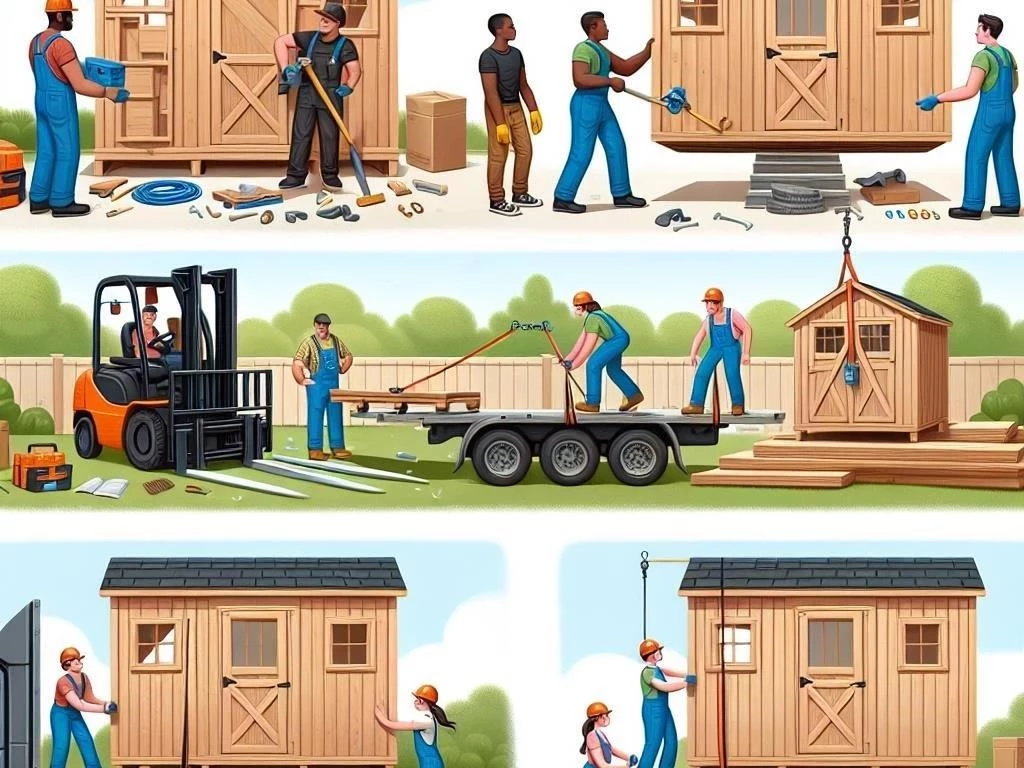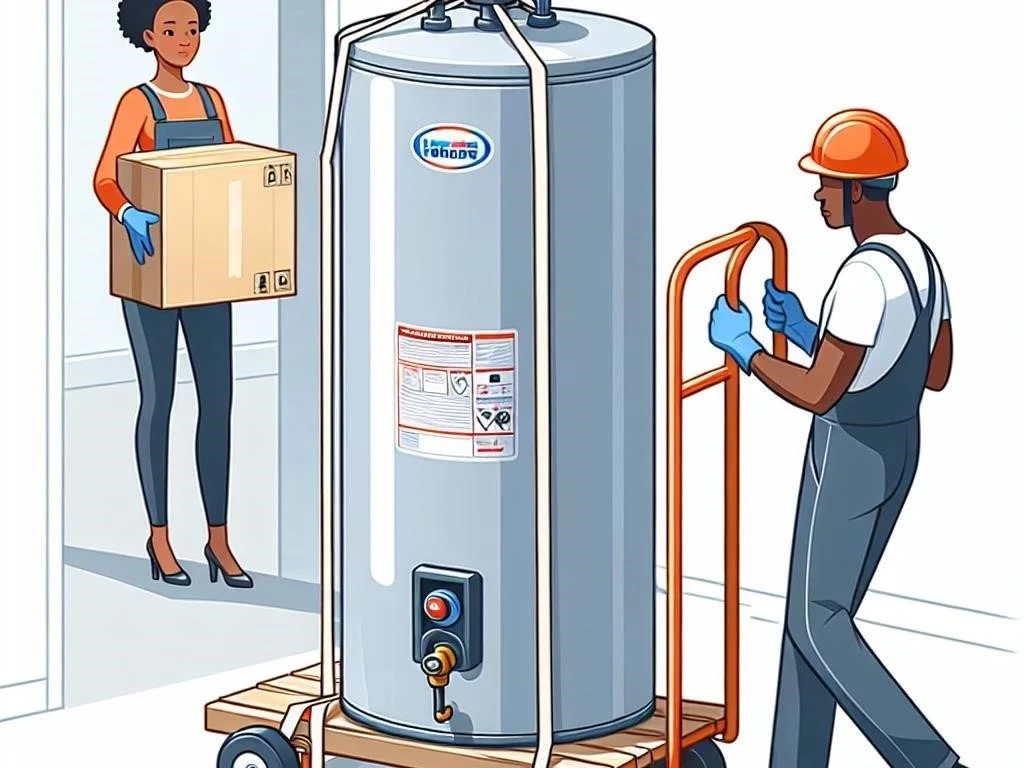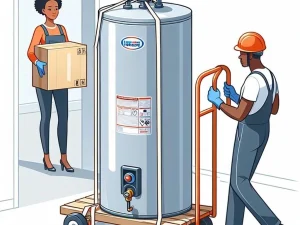How to Transport a Shed
Transporting a shed requires careful planning‚ appropriate equipment‚ and proper techniques to ensure safety and efficiency throughout the relocation process. Follow these guidelines.
Shed relocation involves moving a portable shed from one location to another‚ ensuring its safety and structural integrity during the process. Whether you’re relocating a yard shed or a garden shed‚ understanding the necessary steps is crucial for success. You will need to consider various factors such as shed transport methods‚ tools required‚ and proper planning. Familiarizing yourself with shed moving tips will make the entire operation smoother. This guide will provide you with essential information for a seamless and efficient move‚ making the relocation of your shed a manageable task.
Preparing for the Move
Before initiating the shed relocation process‚ proper preparation is essential to ensure a smooth move. Start by assessing the shed structure for any damage or weaknesses that may affect transport. Next‚ gather necessary moving tools‚ including a flatbed truck or trailer for shed transport‚ and suitable shed transport equipment. Plan the route carefully to avoid obstacles and ensure accessibility. Additionally‚ take measurements of the shed and the intended location to confirm it fits. Securing shed for transport is crucial‚ as is ensuring the yard or garden shed is prepared for handling.
2.1 Assessing the Shed Structure
Assessing the shed structure is a crucial step before relocation. Begin by checking for any signs of damage‚ such as rot or rust‚ which could compromise the integrity during transport. Inspect the foundation and support beams to ensure they are sturdy. Additionally‚ evaluate the roof and walls for any loose panels or shingles that may detach while moving. Document any repairs needed before the move. This assessment will help you determine if disassembling shed components is necessary and ensure safe transportation without damaging the shed structure during the process.
2.2 Choosing the Right Shed Transport Methods
Selecting the appropriate shed transport methods is vital for a successful move. Depending on the size and weight of the shed‚ options may include using a flatbed truck or a trailer for shed transport. For smaller sheds‚ DIY shed move strategies can be implemented‚ utilizing moving tools such as dollies or hand trucks. If the shed is larger‚ professional shed delivery services may be necessary. Always ensure that chosen methods allow for securing shed for transport‚ minimizing risks during transit and ultimately safeguarding the shed’s structural integrity throughout the journey.
Disassembling the Shed
Disassembling the shed is often necessary for safer transportation‚ especially for larger structures. Begin by removing any attached items‚ such as shelves and hooks‚ which could complicate the move. Carefully detach the roof panels‚ walls‚ and floor sections‚ making sure to label each piece for easier reassembly. Utilize appropriate moving tools‚ such as drills and screwdrivers‚ for efficient dismantling. Be cautious when handling heavy components to avoid injury. Proper disassembly not only facilitates the transportation process but also helps preserve the shed structure for its next location‚ ensuring a successful relocation.
3.1 Dismantling Tips for a Smooth Process
To ensure a smooth dismantling process‚ start by creating a detailed plan outlining each step. Gather all necessary moving tools before beginning to avoid interruptions. Label all parts and hardware clearly to facilitate reassembly at the new location. Consider taking photos during disassembly‚ which can serve as a visual guide later. Work systematically‚ removing larger sections first before tackling smaller components. Enlist help if possible‚ as teamwork can expedite the process. Lastly‚ be cautious with heavy pieces and always wear protective gear to avoid injuries during the dismantling phase.
3.2 Tools Needed for Disassembling Shed
Having the right tools is essential for effectively disassembling your shed. Key tools include a cordless drill for removing screws and bolts‚ a hammer for prying apart components‚ and a saw for cutting any stubborn materials. Additionally‚ a level can help ensure the structure remains stable during disassembly. Wrenches and pliers are useful for loosening nuts and bolts. Safety gear‚ such as gloves and goggles‚ is crucial to protect against injuries. A tape measure can assist in accurately measuring parts for reassembly‚ ensuring a smooth transition to the new location;
Moving Tools and Equipment
Utilizing the right moving tools and equipment is essential for transporting a shed efficiently and safely. Essential tools include a flatbed truck or trailer for shed transport‚ ensuring it can support the shed’s weight. Additionally‚ securing straps or ropes are necessary for stabilizing the structure during transit; Dollies and hand trucks can facilitate moving smaller components. Lifting equipment‚ such as jacks‚ may be needed for raising heavy parts. Lastly‚ consider investing in shed transport equipment like ramps for easier loading and unloading‚ ensuring a seamless relocation experience.
4.1 Shed Transport Equipment Overview
Understanding shed transport equipment is crucial for a successful move. Start with a flatbed truck or trailer specifically designed for transporting sheds‚ which provides stability and ample space. Securing straps or ratchet tie-downs are essential for keeping the shed in place during transit. Additionally‚ ramps can facilitate loading and unloading‚ preventing damage to both the shed and the transport vehicle. Lifting equipment‚ such as jacks‚ may be necessary for heavy sections. Lastly‚ always ensure you have sufficient padding materials‚ like blankets‚ to protect the shed’s exterior from scratches and dents.
4.2 Selecting a Trailer for Shed Transport
Choosing the right trailer for shed transport is crucial to ensure safety and efficiency. First‚ determine the shed’s dimensions and weight to select an appropriately sized trailer. A flatbed trailer is often ideal‚ providing a stable platform for loading and unloading. Ensure the trailer has adequate weight capacity and is equipped with securing points for straps. Additionally‚ consider using a trailer with removable sides for easier access. Verify that the trailer’s hitch is compatible with your vehicle‚ and check safety features such as brakes and lights for compliance with regulations.
Transporting the Shed
Transporting the shed requires careful planning to ensure safety and stability during the move. Start by loading the shed onto the trailer or flatbed truck‚ using ramps for easier access. Make sure to distribute the weight evenly to prevent tipping. Once loaded‚ secure the shed using heavy-duty straps or ropes‚ ensuring it is tightly fastened to avoid movement. Drive slowly and cautiously‚ especially on uneven terrain or sharp turns. Always follow local regulations regarding transport loads‚ and be prepared for unexpected obstacles along the route to ensure a successful relocation.
5.1 DIY Shed Move Strategies
Implementing DIY shed move strategies can save costs and ensure a personalized approach. Start by gathering a team of friends or family to assist‚ making the process more manageable. Use dollies or hand trucks to maneuver smaller components‚ while larger sections may require a flatbed trailer. Consider using a lever system to lift the shed‚ allowing for easier positioning. Always secure the shed with straps during transport to prevent shifting. Planning the route in advance‚ considering potential obstacles‚ will contribute to a smooth transition and successful relocation of your shed.
5.2 Lifting and Securing Shed for Transport
Lifting and securing the shed for transport is a critical step to ensure safety. Start by using lifting equipment‚ such as jacks or hoists‚ to elevate the shed slightly off the ground. Once elevated‚ place sturdy wooden blocks or supports underneath to provide stability. After positioning‚ carefully load the shed onto the trailer or flatbed truck. Use heavy-duty straps or ratchet tie-downs to firmly secure the shed‚ ensuring it doesn’t shift during transit. Double-check all connections and safety measures before starting the journey to prevent any accidents while transporting your shed.
Garden Shed Transport Considerations
When transporting a garden shed‚ several considerations are important for a safe and successful move. First‚ evaluate the shed’s structure and contents to determine if disassembly is necessary. Remove any items inside‚ as they can add weight and complicate the move. Check local regulations regarding transport permits‚ especially if the shed is oversized; Choose a route that avoids low bridges and narrow streets‚ ensuring accessibility. Additionally‚ consider weather conditions; transporting during dry weather is ideal. Finally‚ ensure all components are securely fastened to prevent damage during transit‚ preserving the shed’s integrity.
Shed Delivery Options
When considering shed delivery options‚ there are several methods to choose from based on your needs and budget. You can opt for professional shed delivery services‚ which provide experienced movers and the necessary equipment for safe transport. Alternatively‚ a DIY approach allows you to use your vehicle or rent a trailer for the move. Some companies offer flatbed trucks specifically designed for shed transport‚ ensuring secure loading and unloading. Evaluate the costs and convenience of each option‚ keeping in mind the size and weight of your shed to determine the best solution.
Shed Moving Tips for a Successful Move
To ensure a successful shed move‚ start with thorough planning and preparation. Create a checklist detailing necessary tools‚ equipment‚ and steps involved in the process. Enlist help from friends or family to make the move easier and safer. Always assess the shed structure for potential weaknesses before beginning the transport. Utilize appropriate lifting and securing methods to prevent damage during transit. Drive cautiously and follow all local regulations regarding oversized loads. Finally‚ keep a detailed inventory of all parts to facilitate reassembly at the new location‚ ensuring a smooth transition.
Successfully transporting a shed involves careful planning‚ the right tools‚ and effective techniques to ensure safety throughout the process. By assessing the shed structure‚ choosing appropriate transport methods‚ and utilizing proper lifting and securing techniques‚ you can minimize risks during relocation. Whether opting for professional services or using a DIY approach‚ preparation is key for a smooth transition. Remember to consider local regulations and weather conditions‚ as they can impact the move. Following these guidelines will help ensure your shed arrives at its new location intact and ready for use.














Post Comment